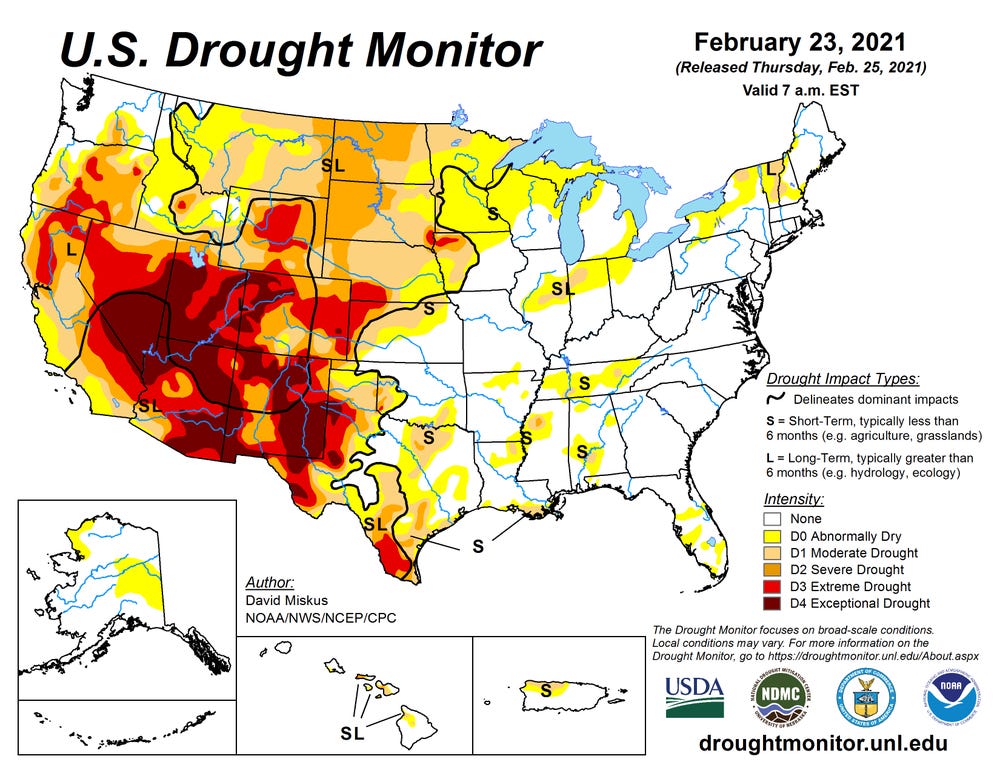Persisting drought challenges cattle production
Specialists discuss strategies for livestock producers during the virtual Southwest Beef Symposium.

Dry conditions persist in the Southwest, plaguing those who raise beef cattle.
With producers looking hard at their herds, the annual Southwest Beef Symposium recently focused on “Dealing With Drought” to help producers develop a strategy in response to deteriorating conditions.
Hosted jointly by New Mexico State University Cooperative Extension Service and the Texas A&M AgriLife Extension Service, topic presentations drilled down on assistance specifics like the cattle market outlook and strategies for rebuilding herds along with nutritional option considerations.
“Drought has again stricken New Mexico and West Texas with a vengeance, leaving producers coping the best they can. Our focus this year was to provide drought management topics to assist area producers through this trying time,” said Fort Stockton’s AgriLife Extension livestock specialist Bruce Carpenter.

Strategies
Mindful of what the drought did to the 2014 Texas cattle market, Economist David Anderson, Texas AgriLife Extension, Bryan-College Station, had some thoughts on the current market outlook and buy-in strategies.
“Ranchers with calves have seen corn and soy prices skyrocket the last few months and every time feed costs go up, calf prices go down,” he says. “When cattle numbers decline, beef production follows. On the one hand, we’ve got feed costs going up as a result of tighter supplies and calf prices moving lower, but we’ve also got fewer numbers and declining production against improving demand which will pull prices higher.”
 Economist David Anderson, Texas AgriLife Extension, Bryan-College Station (Photo courtesy of Texas AgriLife Extension)
Economist David Anderson, Texas AgriLife Extension, Bryan-College Station (Photo courtesy of Texas AgriLife Extension)
Drought is also contributing to falling cattle numbers. There are about half-a-percent fewer beef cows in the U.S. this year than last year which was down about a percentage point. “We’ve had close-to-record beef production but declining prices and when prices go down, we reduce the number of cattle in the herd,” Anderson says, adding, “The drought becomes a bit of a wildcard in terms of the cattle market with short-term lower prices forcing a sell-off of animals.”
Drought monitor predictions are cautiously optimistic that some medium-term weather forecasts indicate somewhat of a return to normal by April or May, aided by current winter storms bringing a significant source of moisture. “Or we could jump straight into essentially summer for Texas and that would imply the drought continues or gets worse. That’s the wildcard.”
Once the weather pattern stabilizes, what is the path to rebuilding? Anderson has an idea, based on the dairy industry that sends heifers off to be raised and bred, ready to calve on return.
“Let’s say the drought is over and ranchers who had to sell off some of their herd want to buy cattle. Back in 2011-12, we had terrible drought in Texas and got rid of so many cows that a shortage of animals drove prices to record highs. When that drought broke, ranchers wanting to buy more cattle found prices astronomically high. Are we getting into this same situation? That will depend on whether or not the current drought worsens or improves.
“Right now, I’d argue that our cattle numbers are in slow decline with prices going up because you can’t feed your way out of a drought because you also haven’t grown anything for the animals to eat. Things become prohibitively expensive and people don’t buy the feed and sell the animals. I’m suggesting, like they do in the dairy industry, that the heifer calves be shipped off to somebody else to raise them before returning them back bred and ready to have a calf.”
Anderson cites the 2014 difficulties when a young female could cost $3,000 because there weren’t that many available. “Sending them out for someone else to raise, at a fixed-fee price, might be a cheaper solution than taking your chances on the open market a couple of years hence.”
So what do you do? “If you sell off the herd, you’re not going to have a lot of money coming in, but you will incur a monthly feed bill for the animals for a year and a half versus not spending those funds, conserving that cash for a later buy- back. This is a strategy that spends some money now in the hopes of spending less overall at a later date. I think there are some folks who may be open to thinking about this idea based on the difficulties encountered coming out of the last drought.”
Asked if he thought ranch buddies would consider him a genius or a crackpot for the idea, he acknowledged he’s been on the edge of both at times and noted there was a fine line between genius and insanity.
About the Author(s)
You May Also Like



